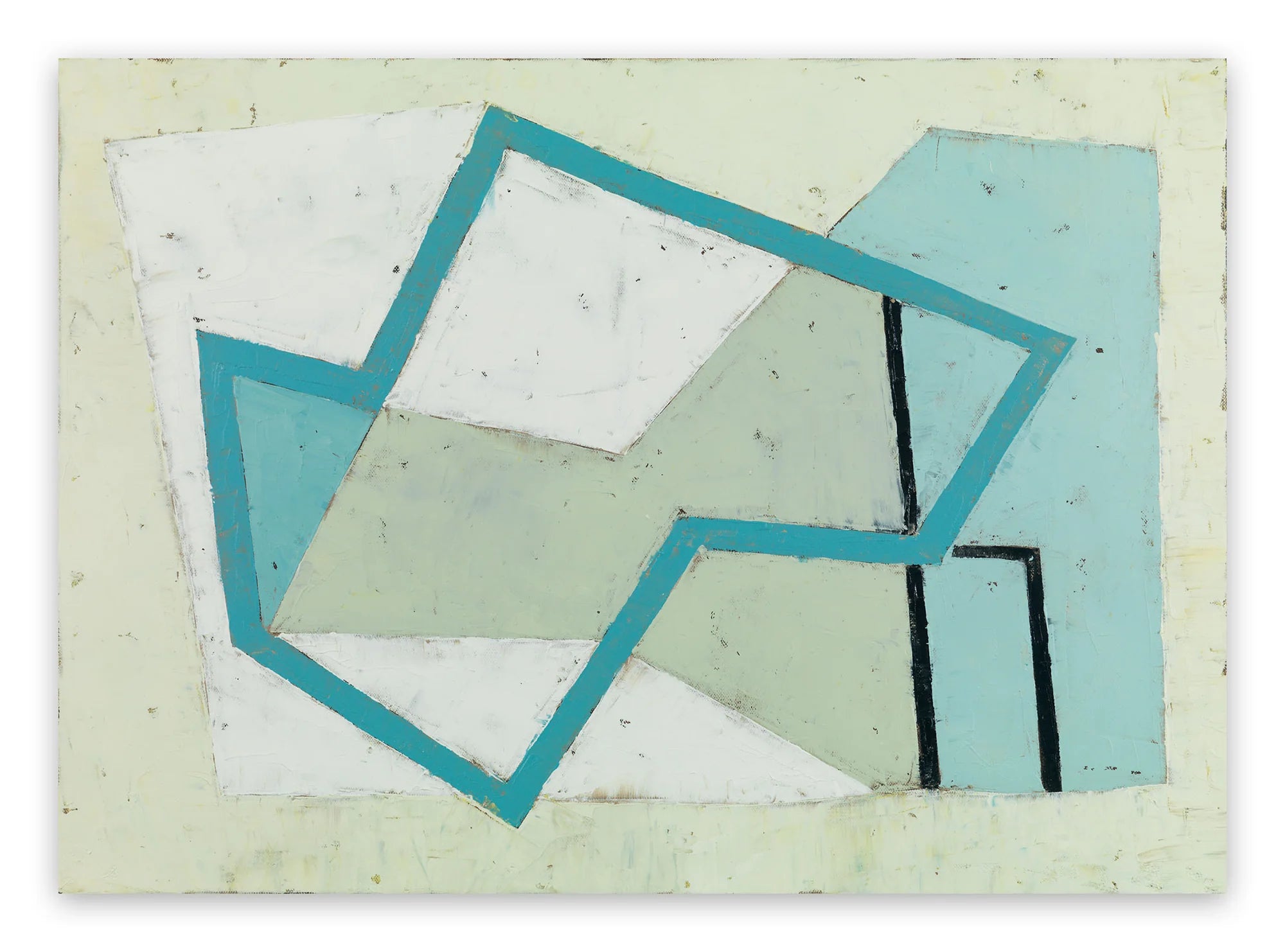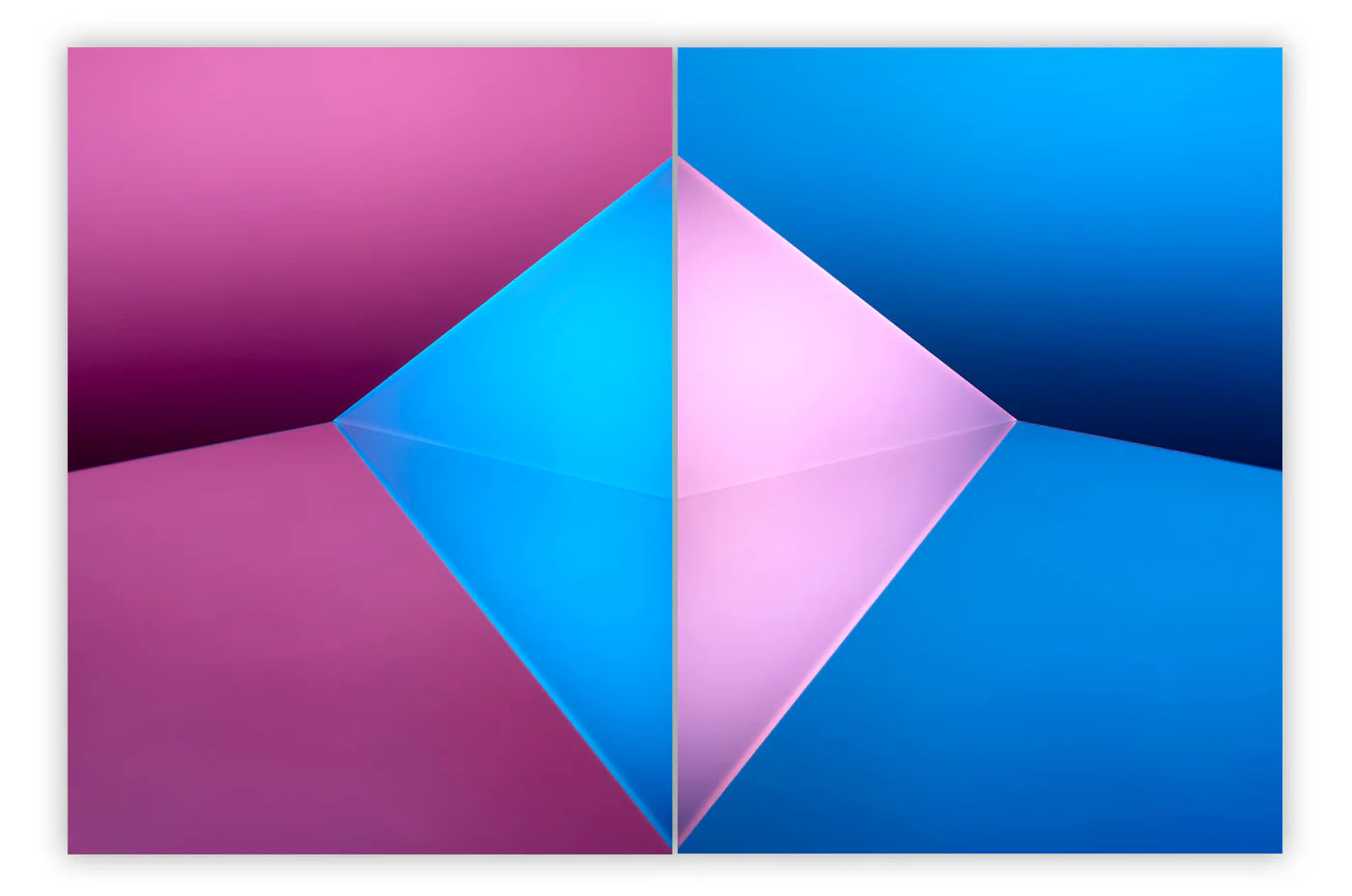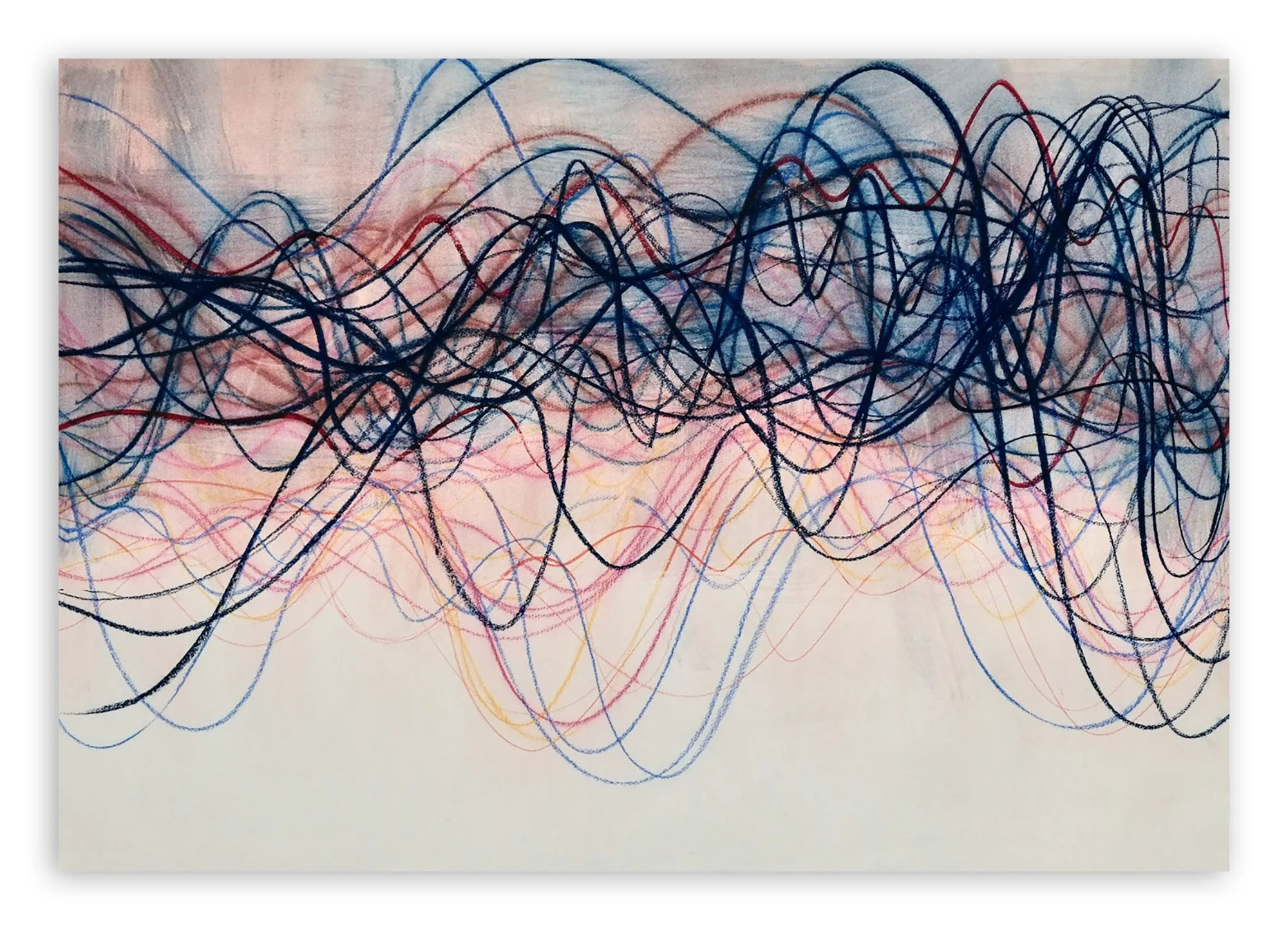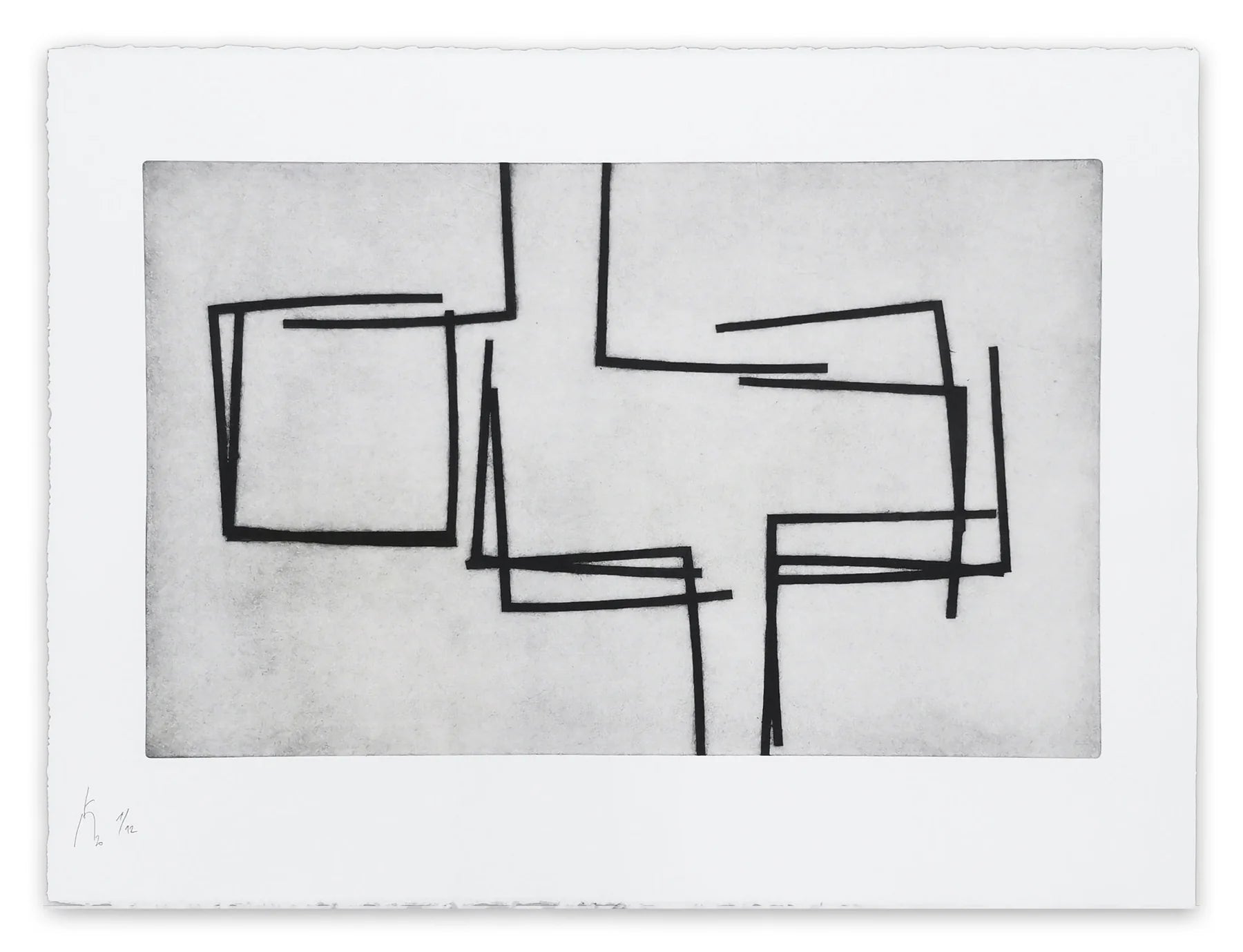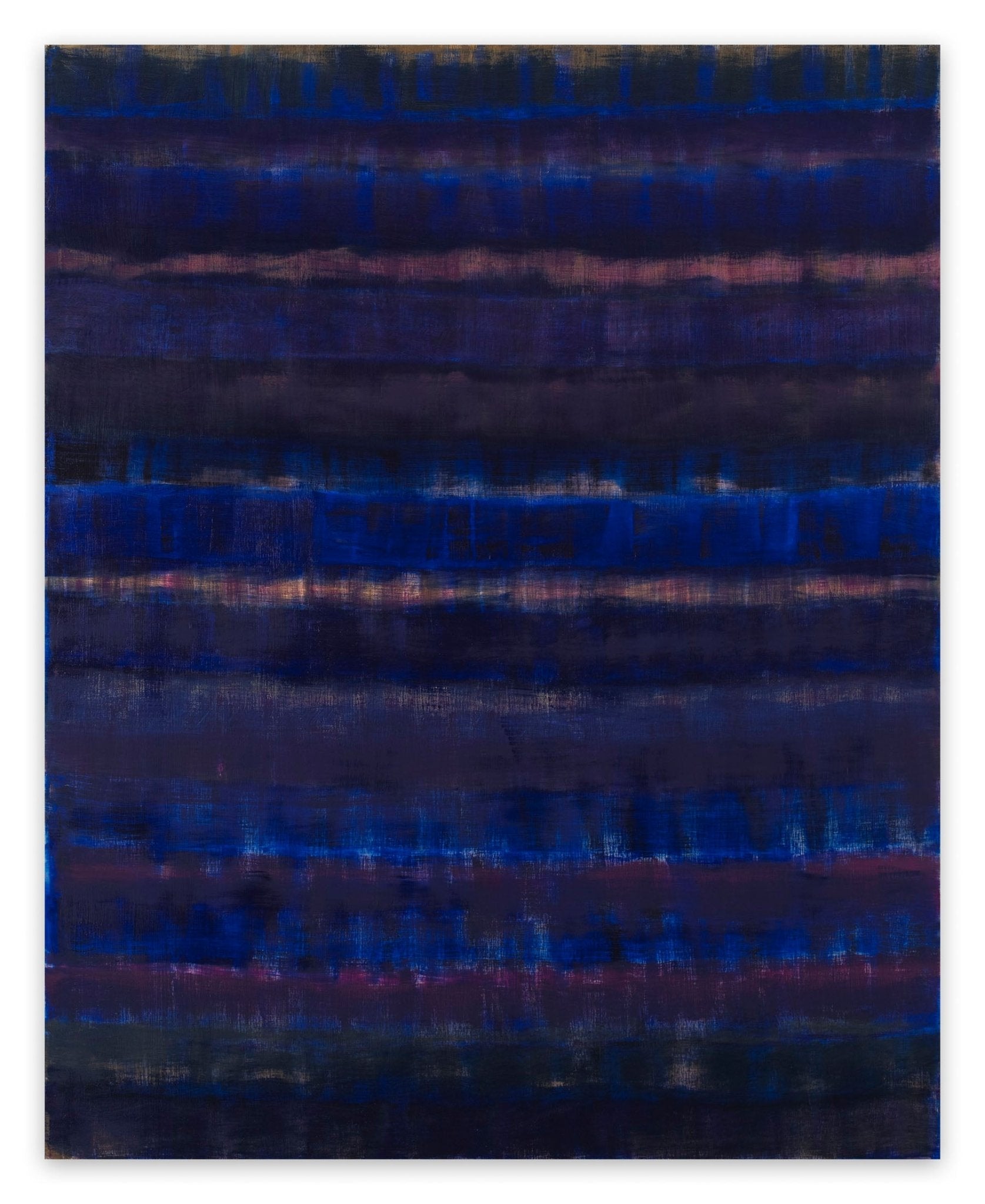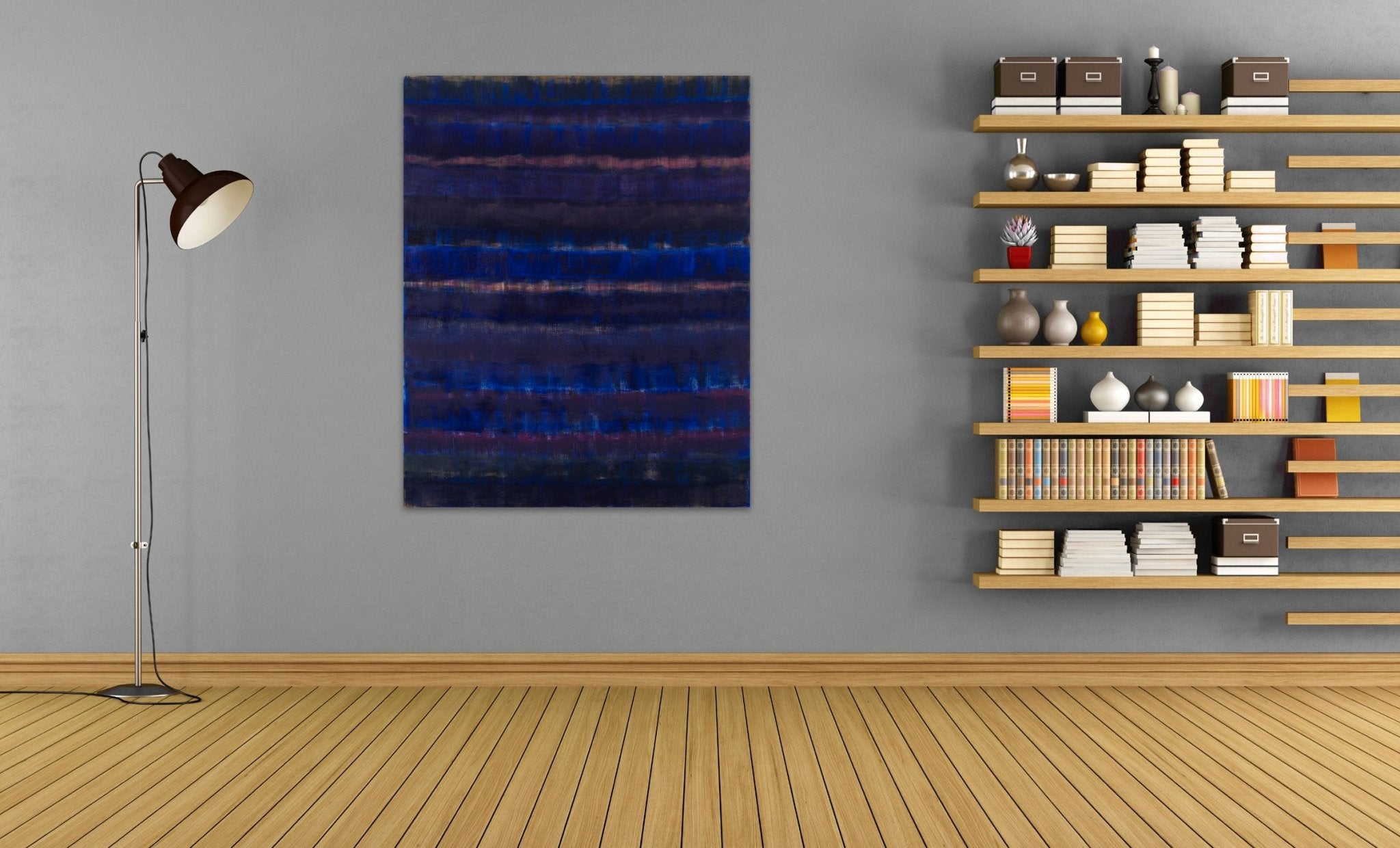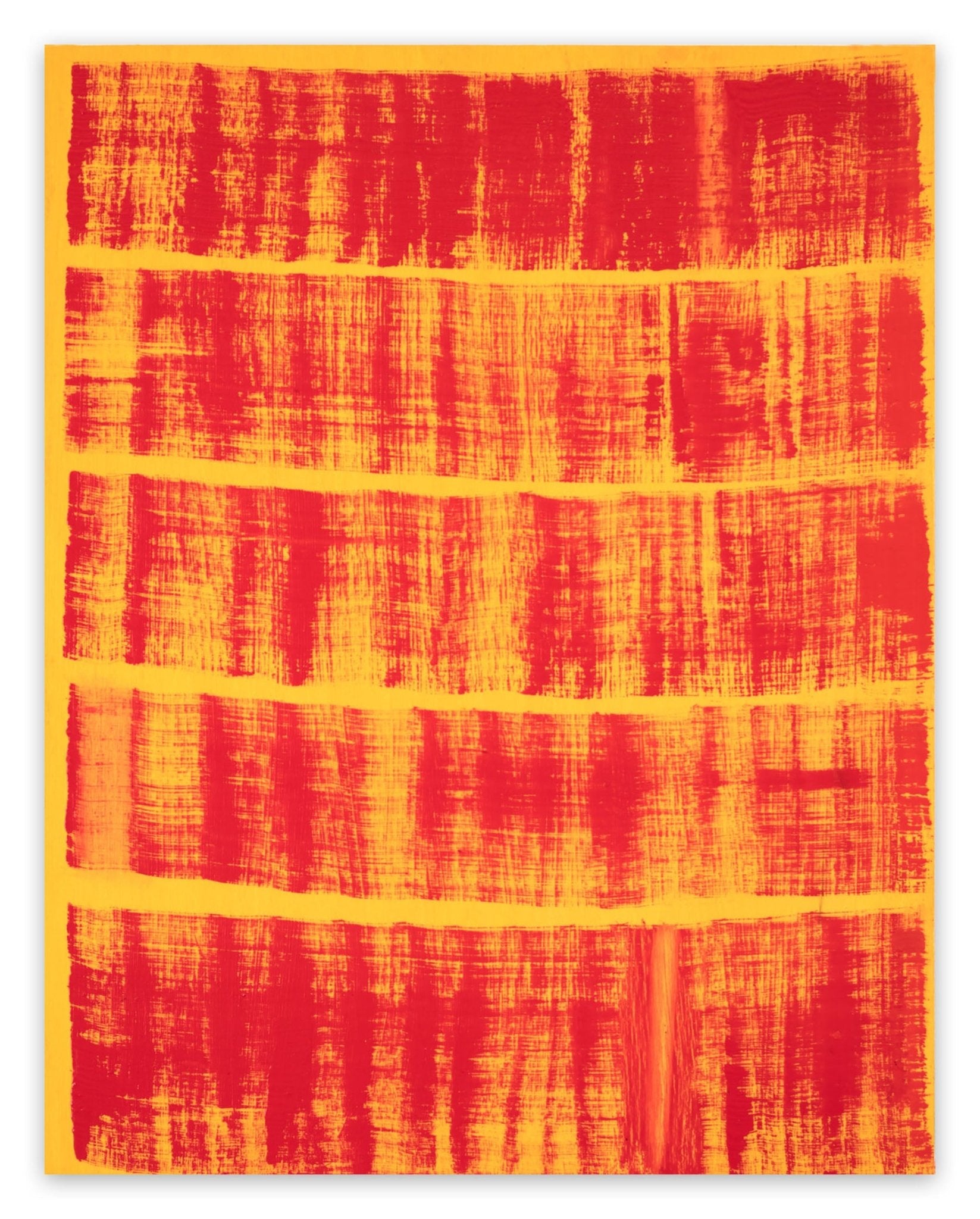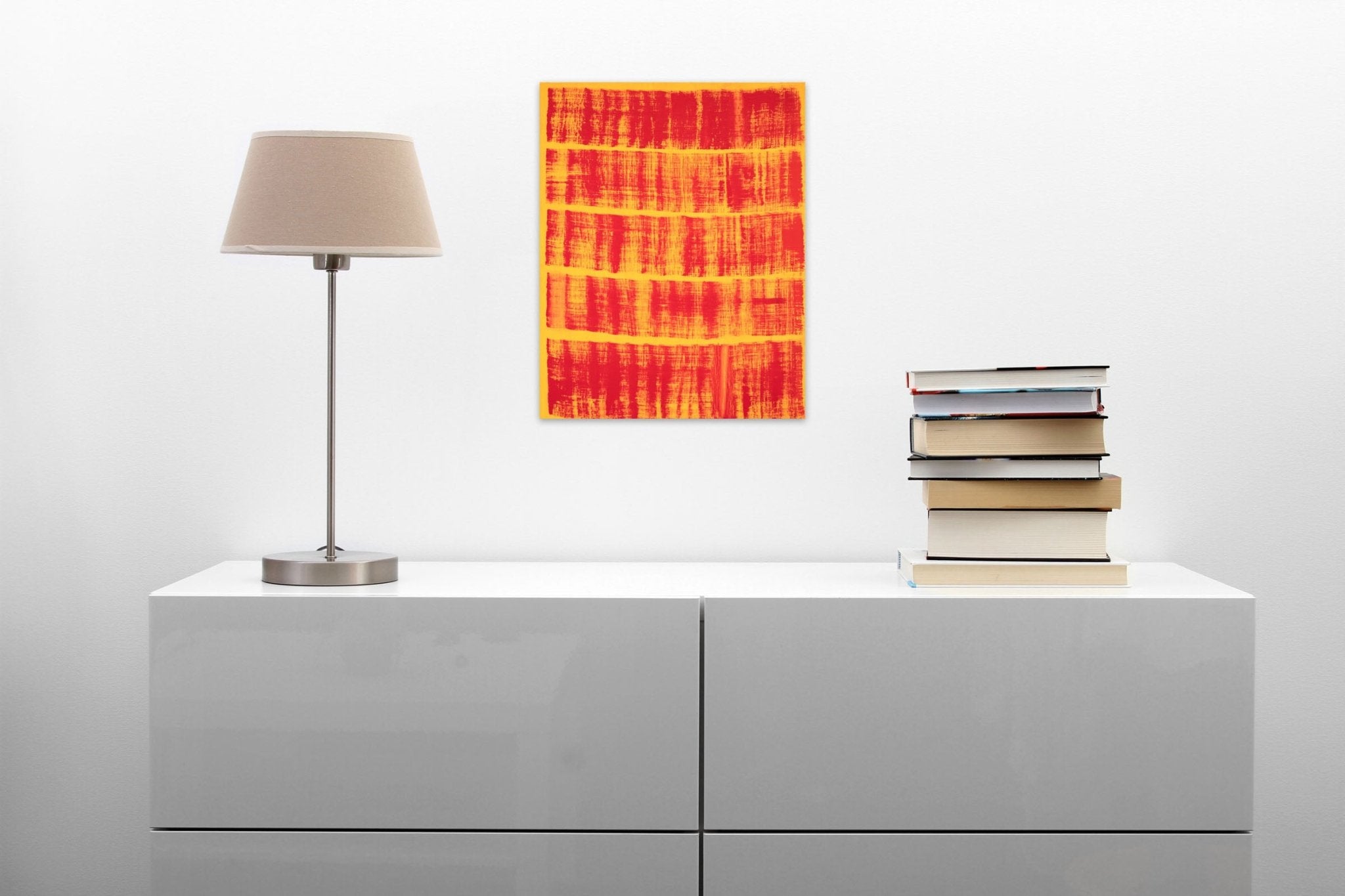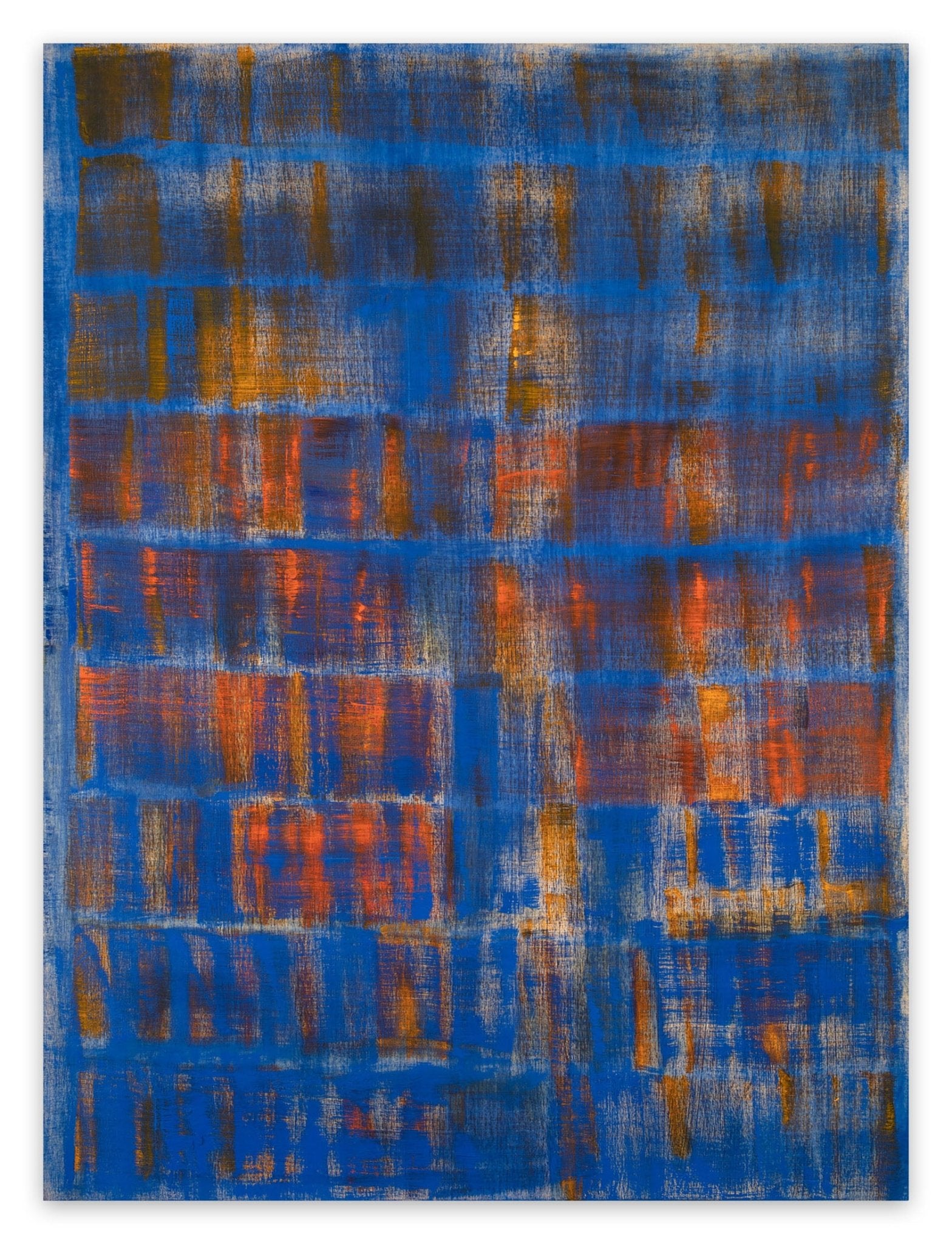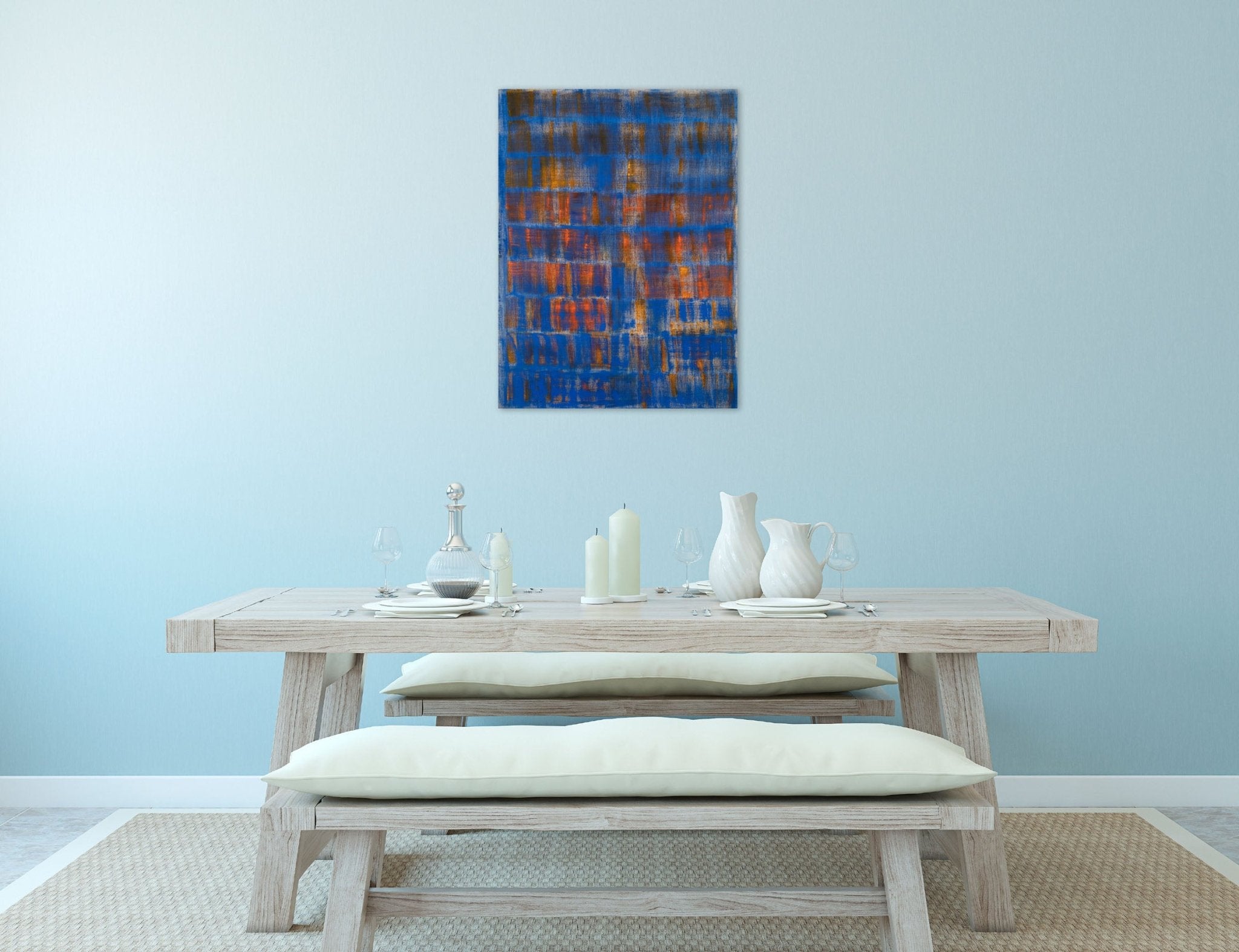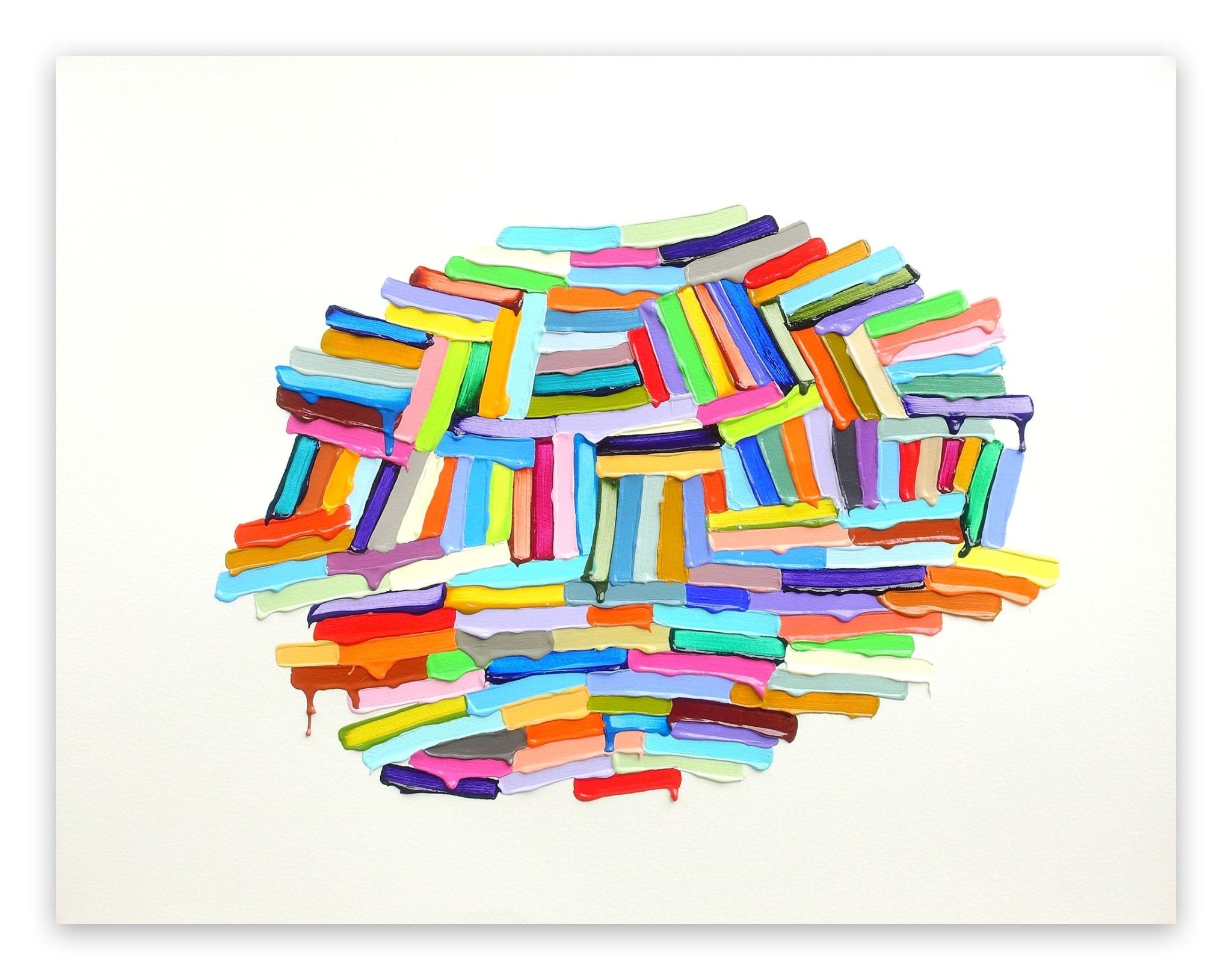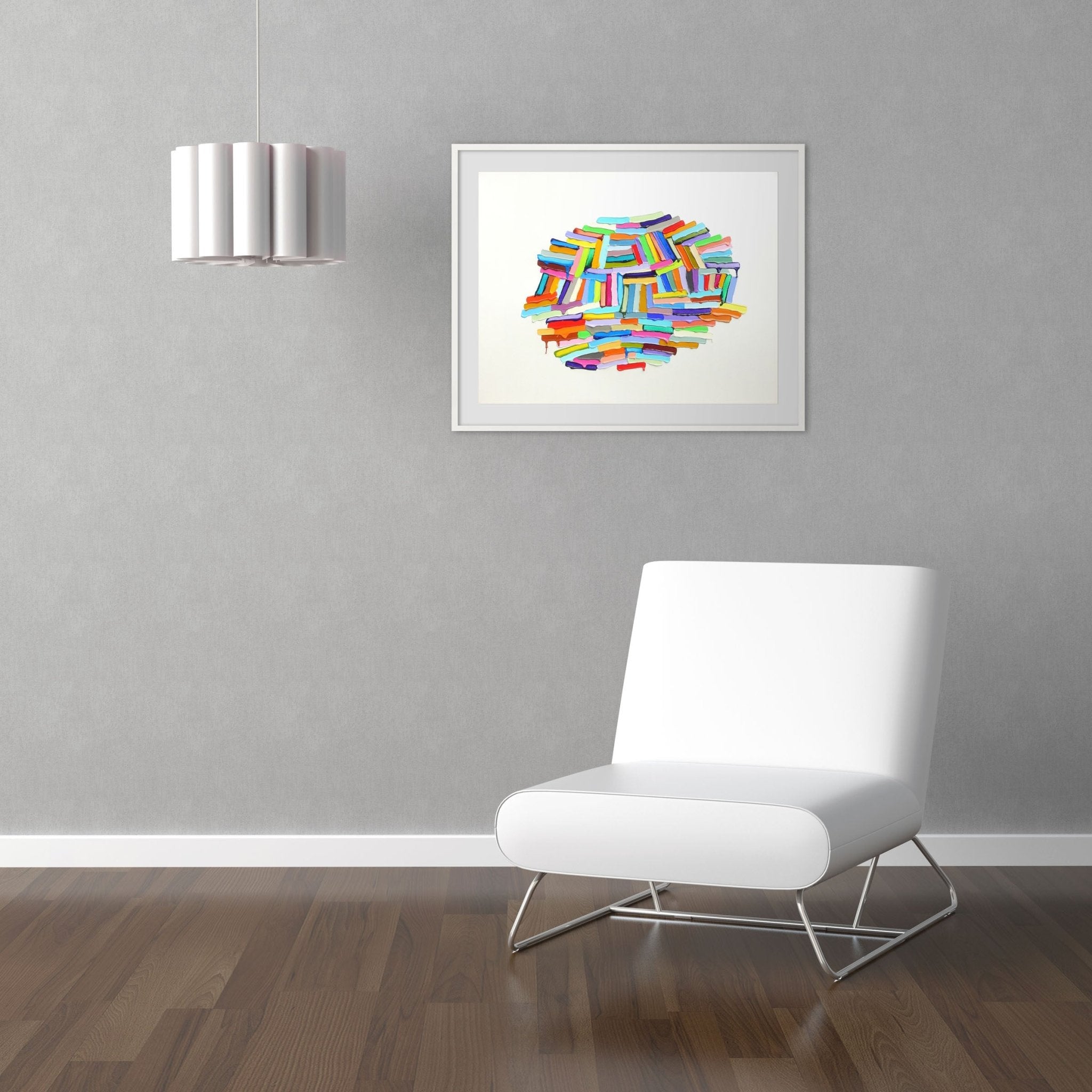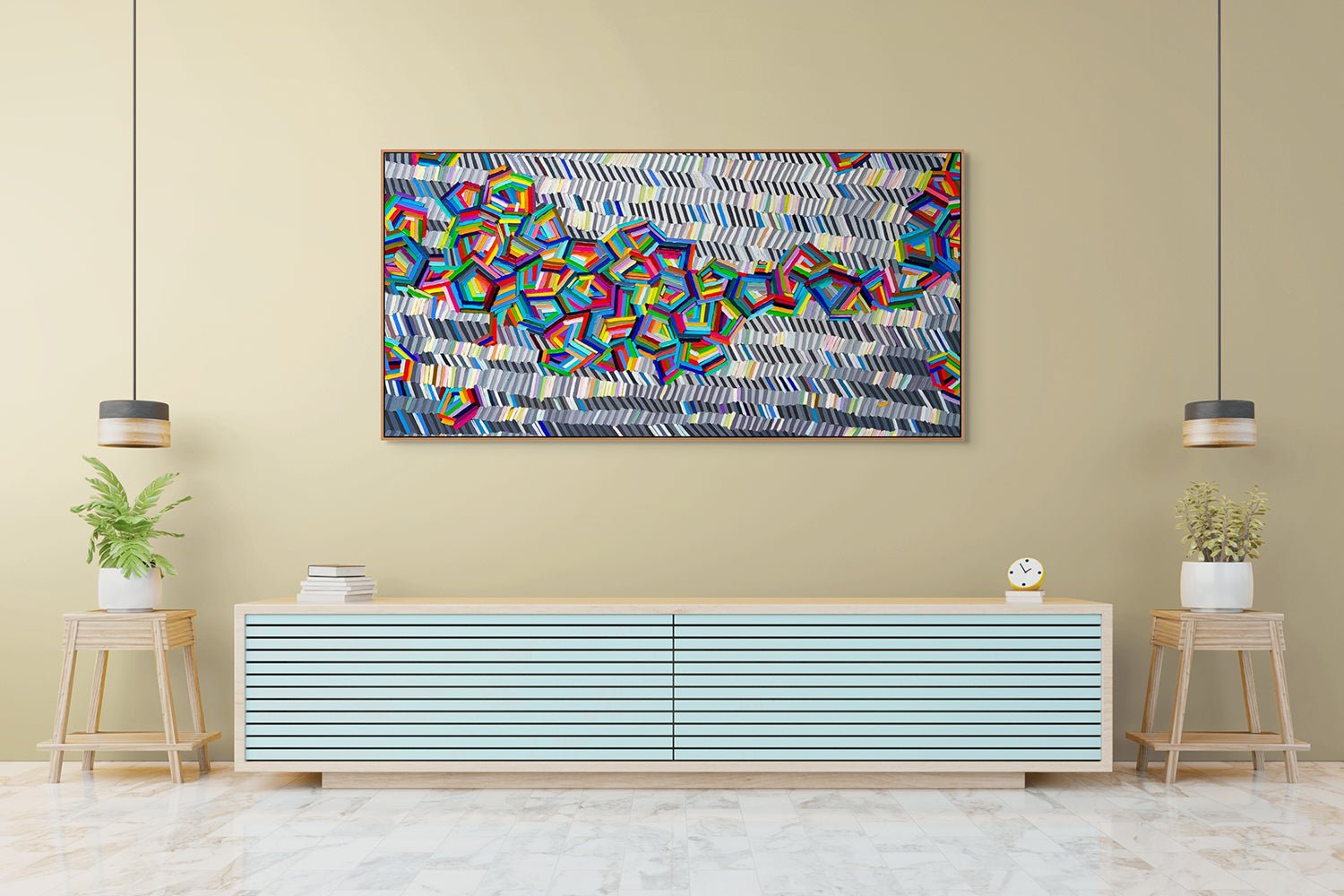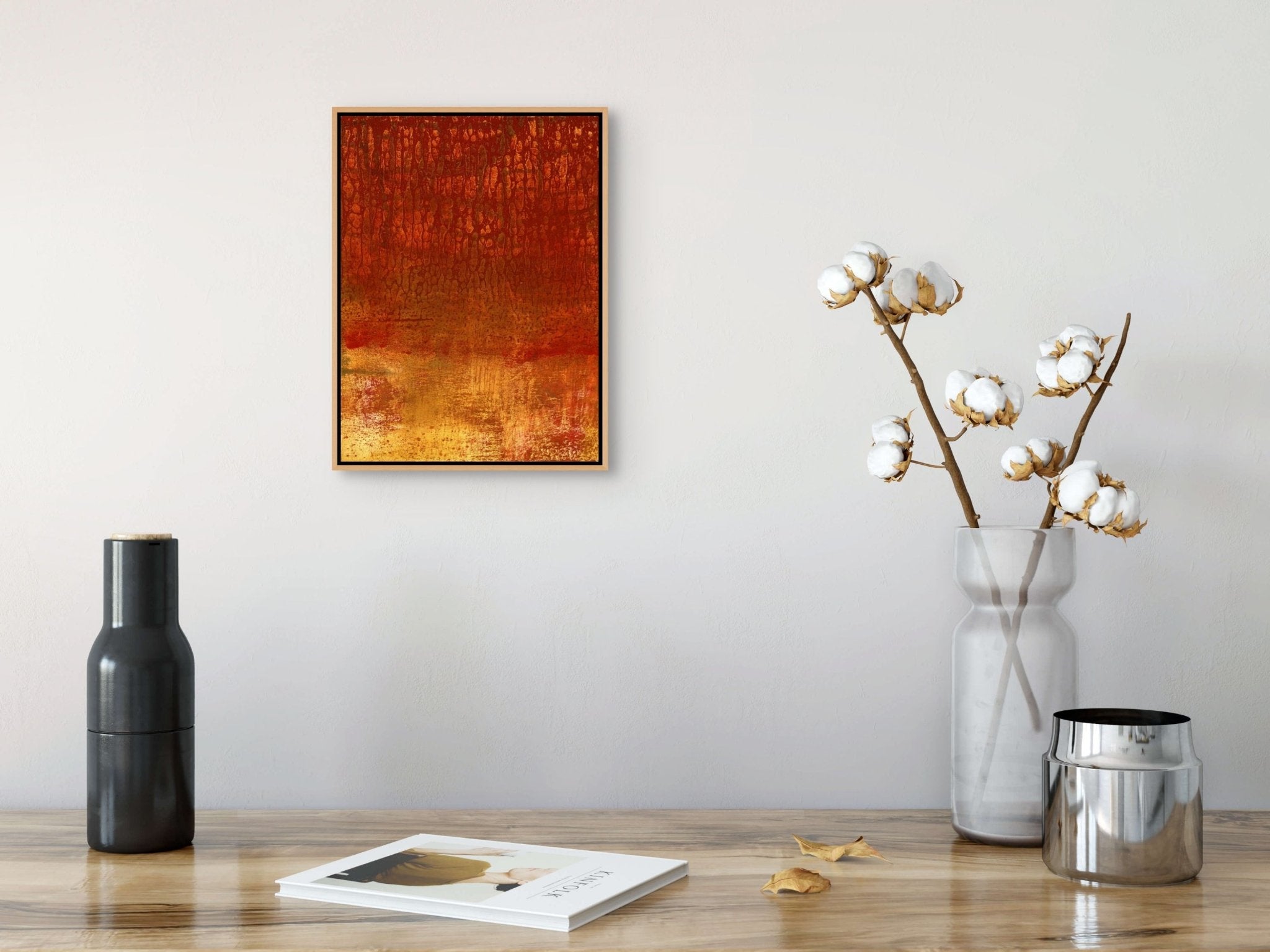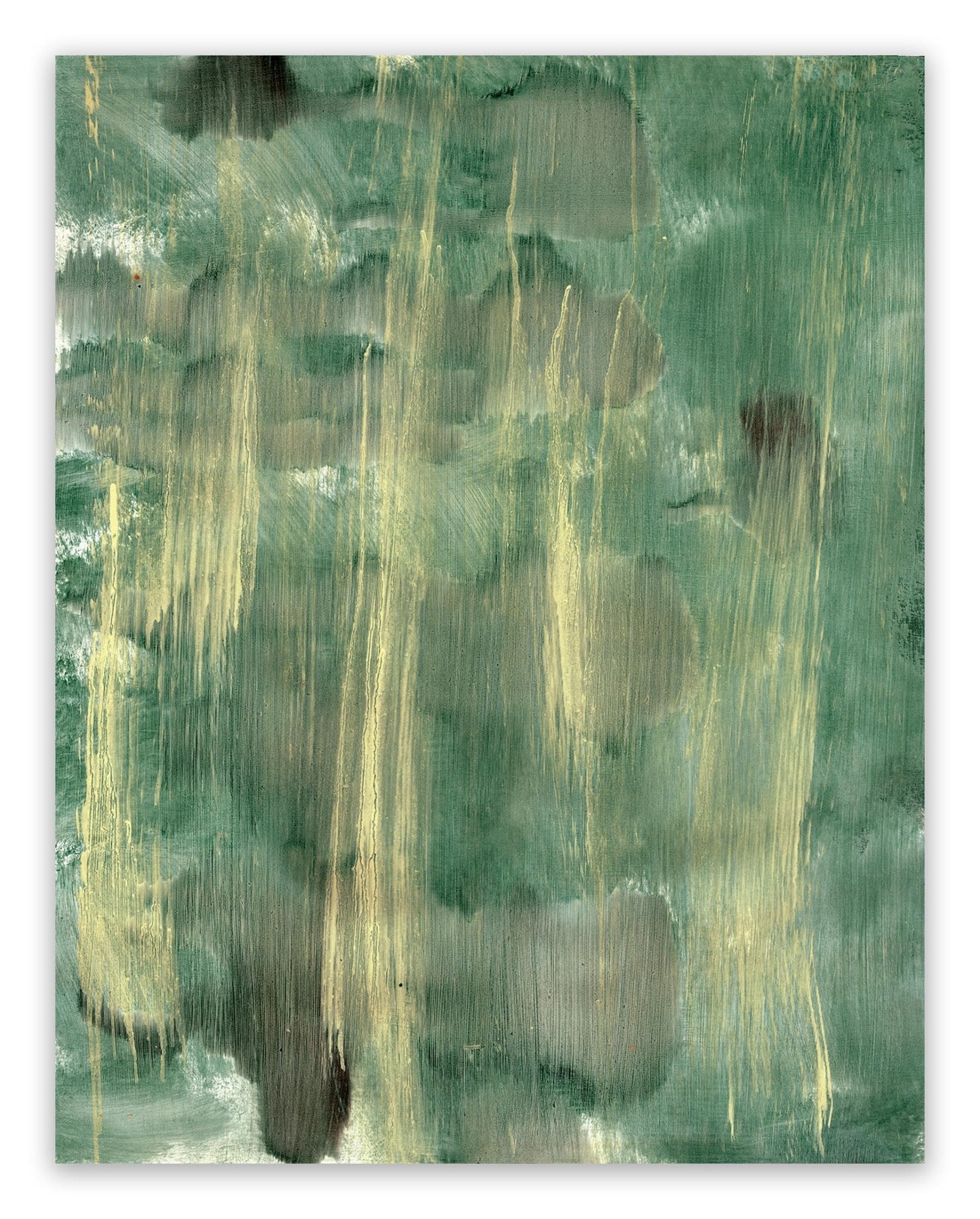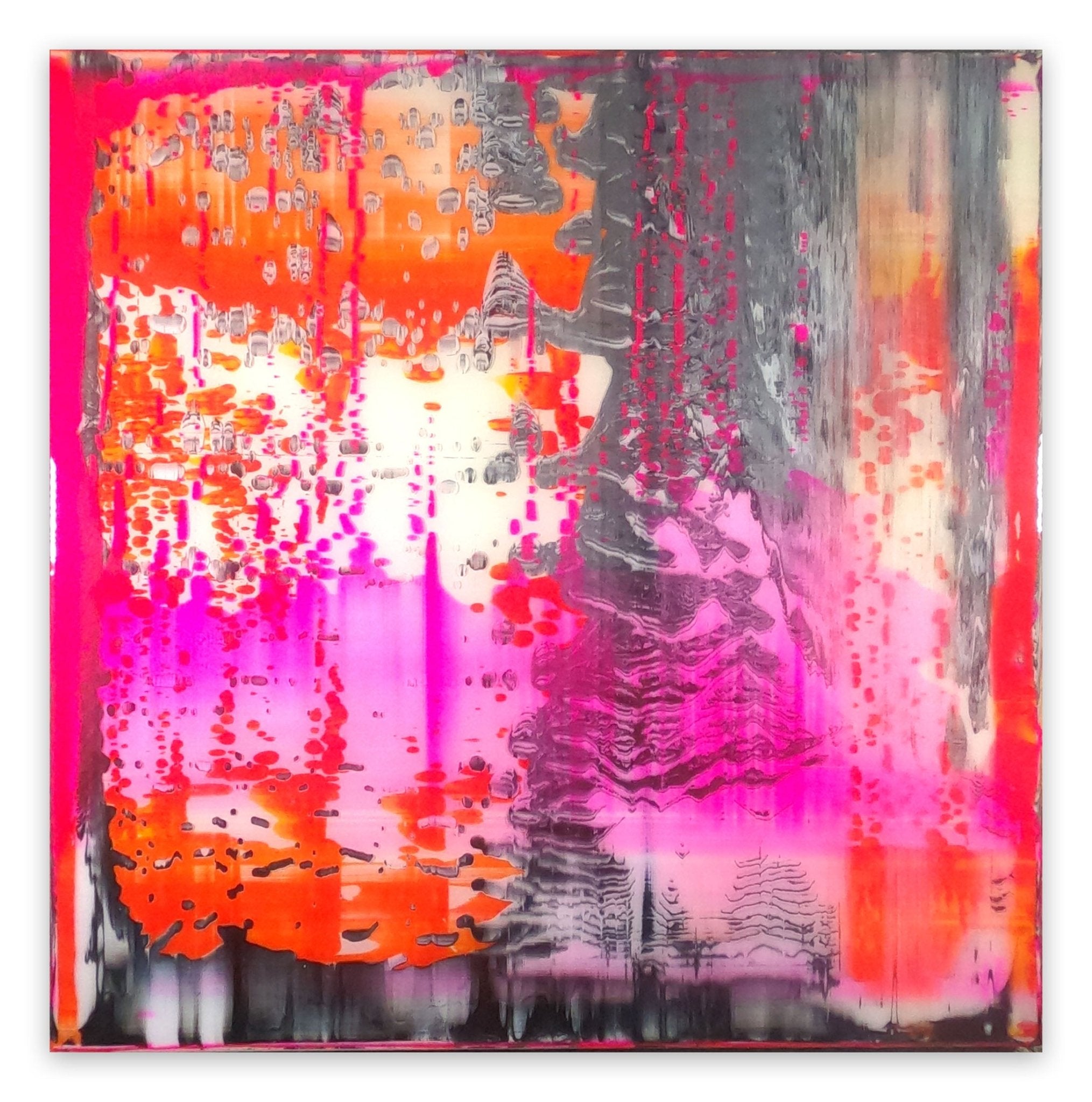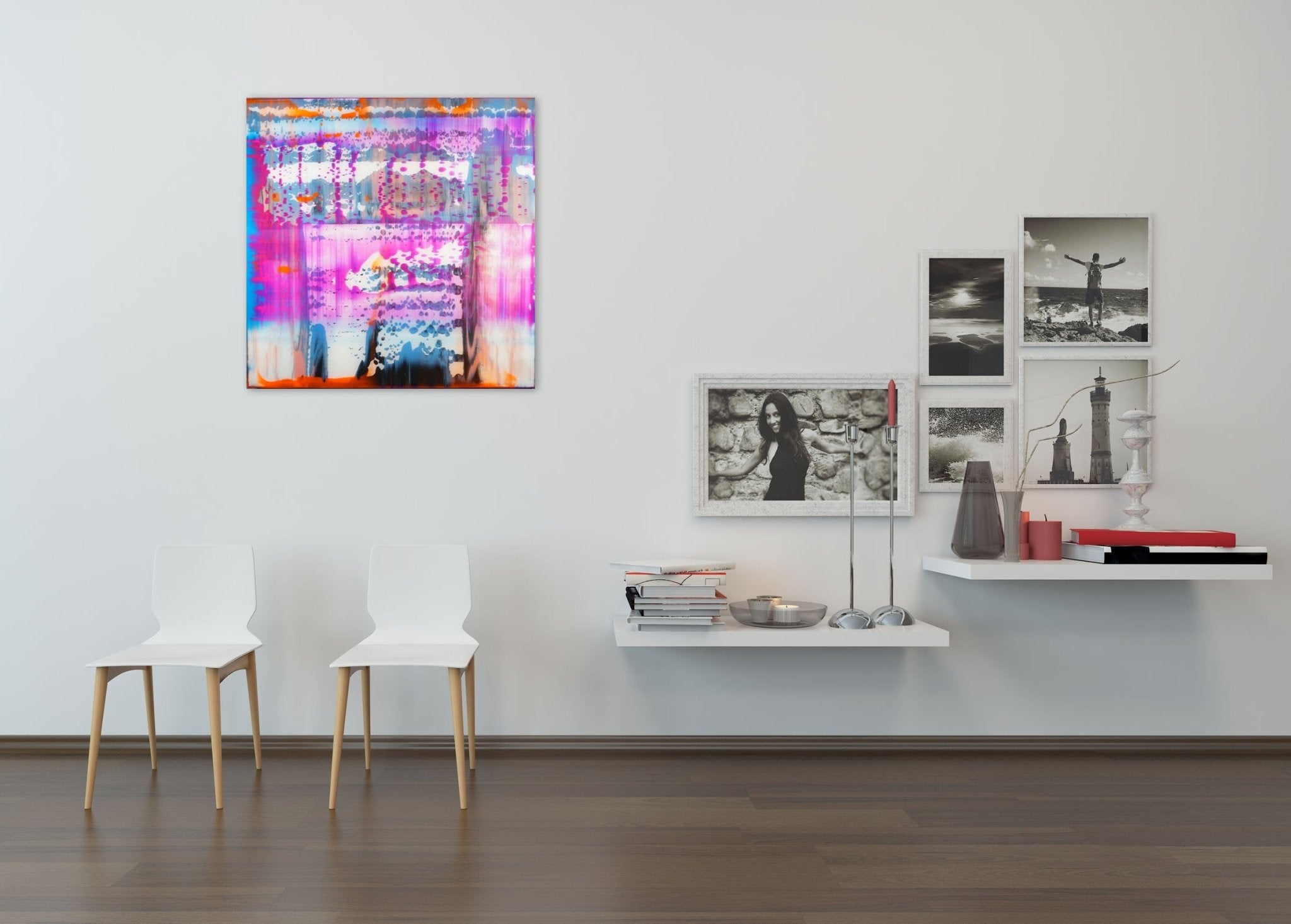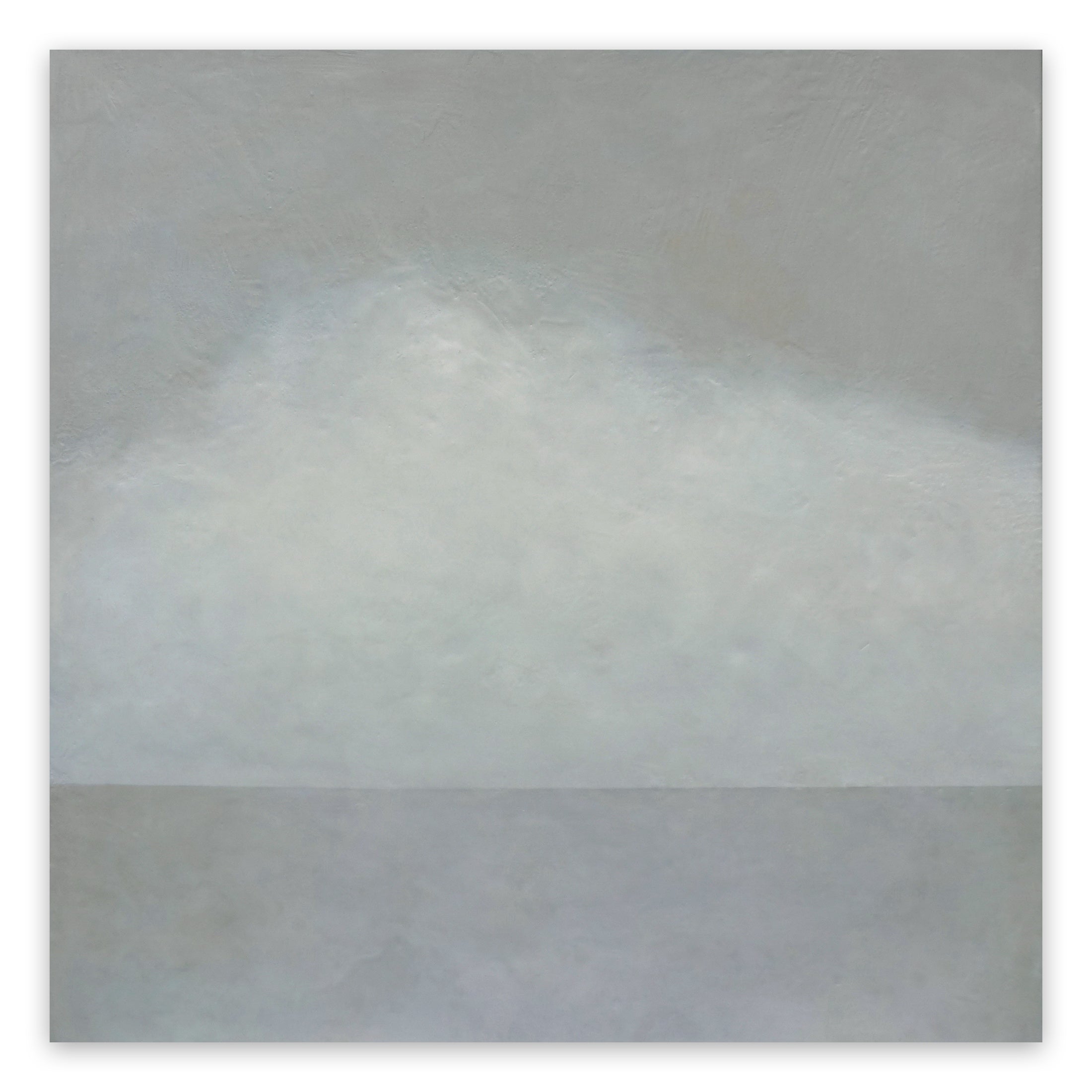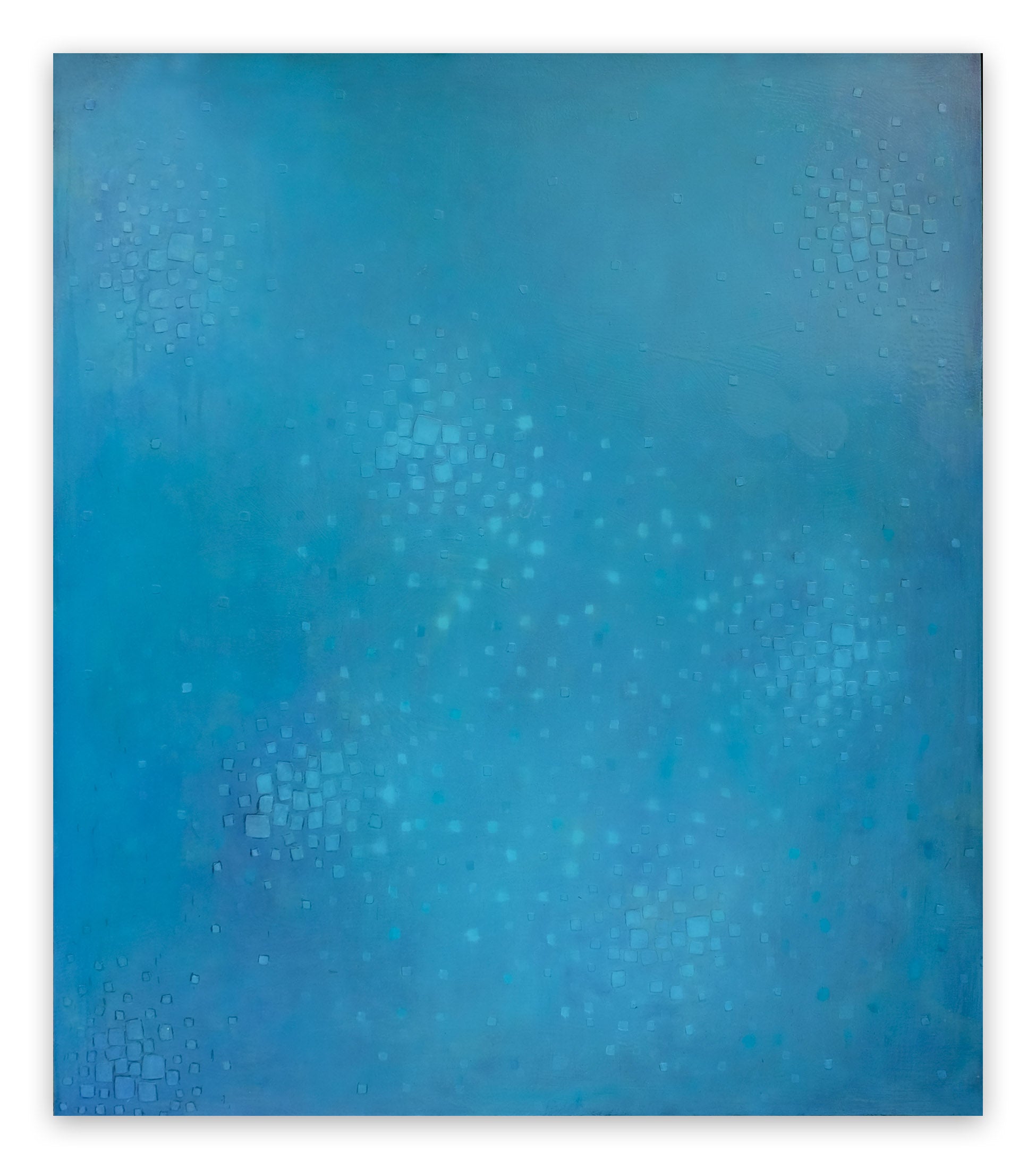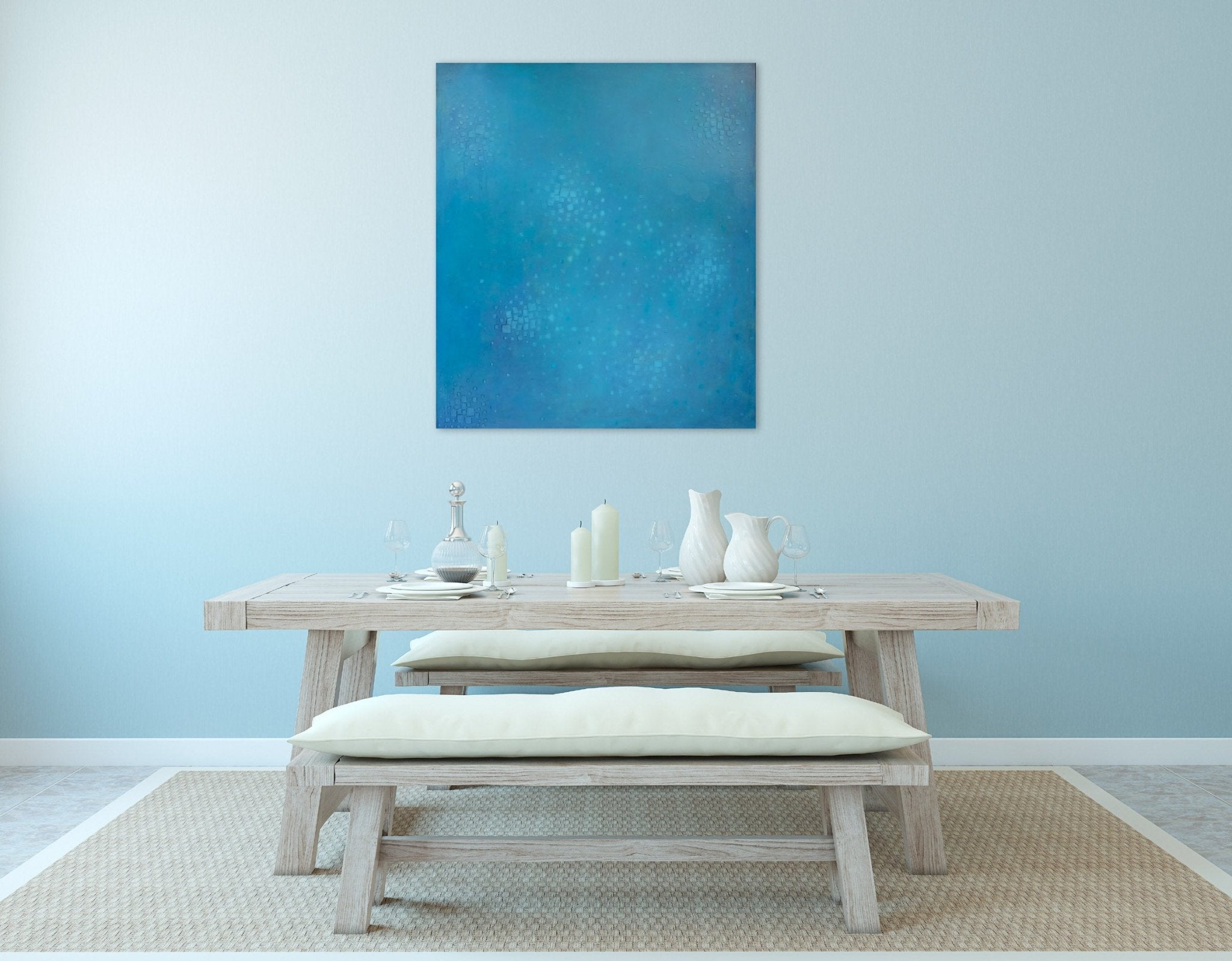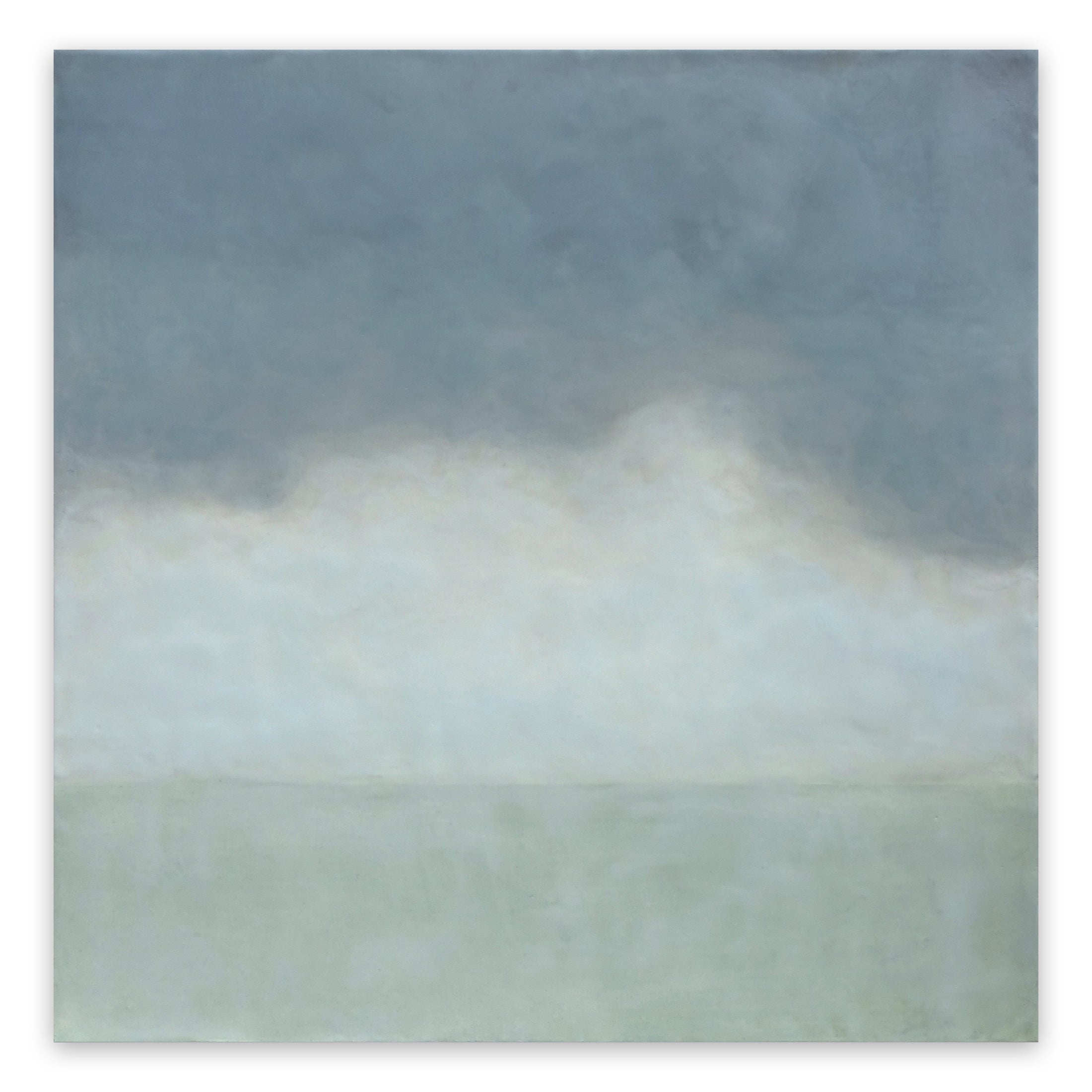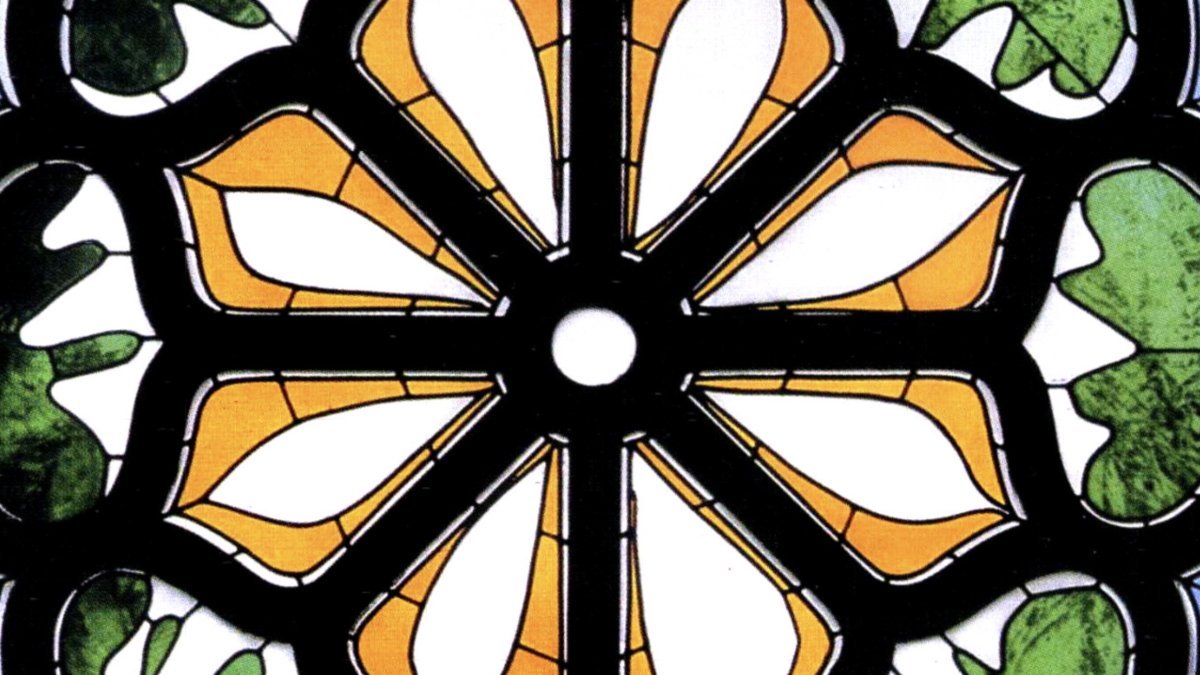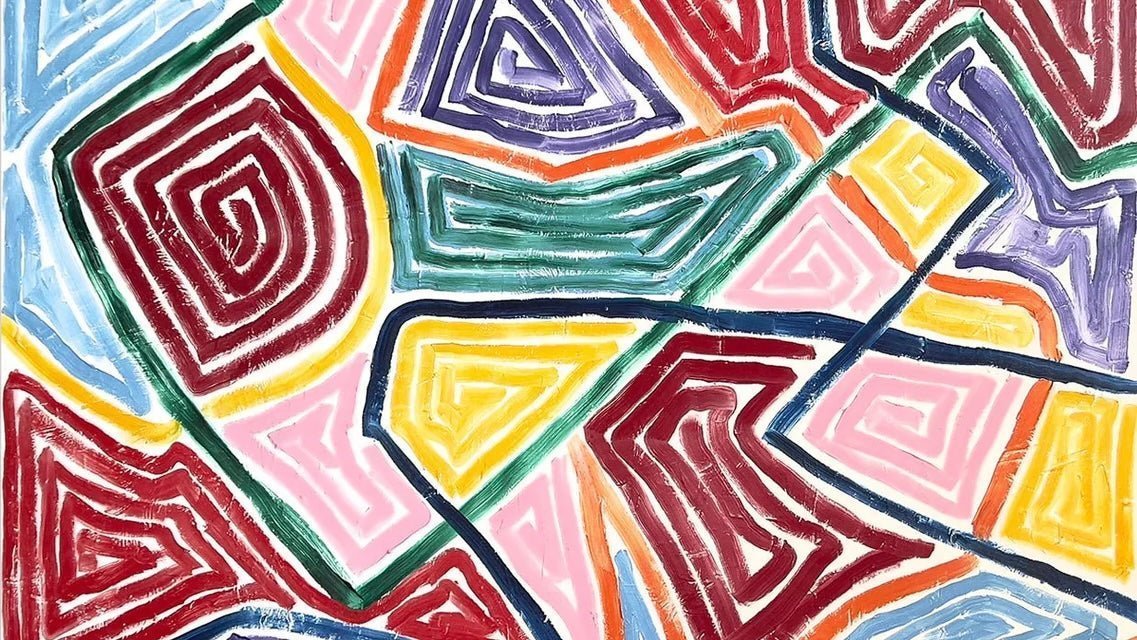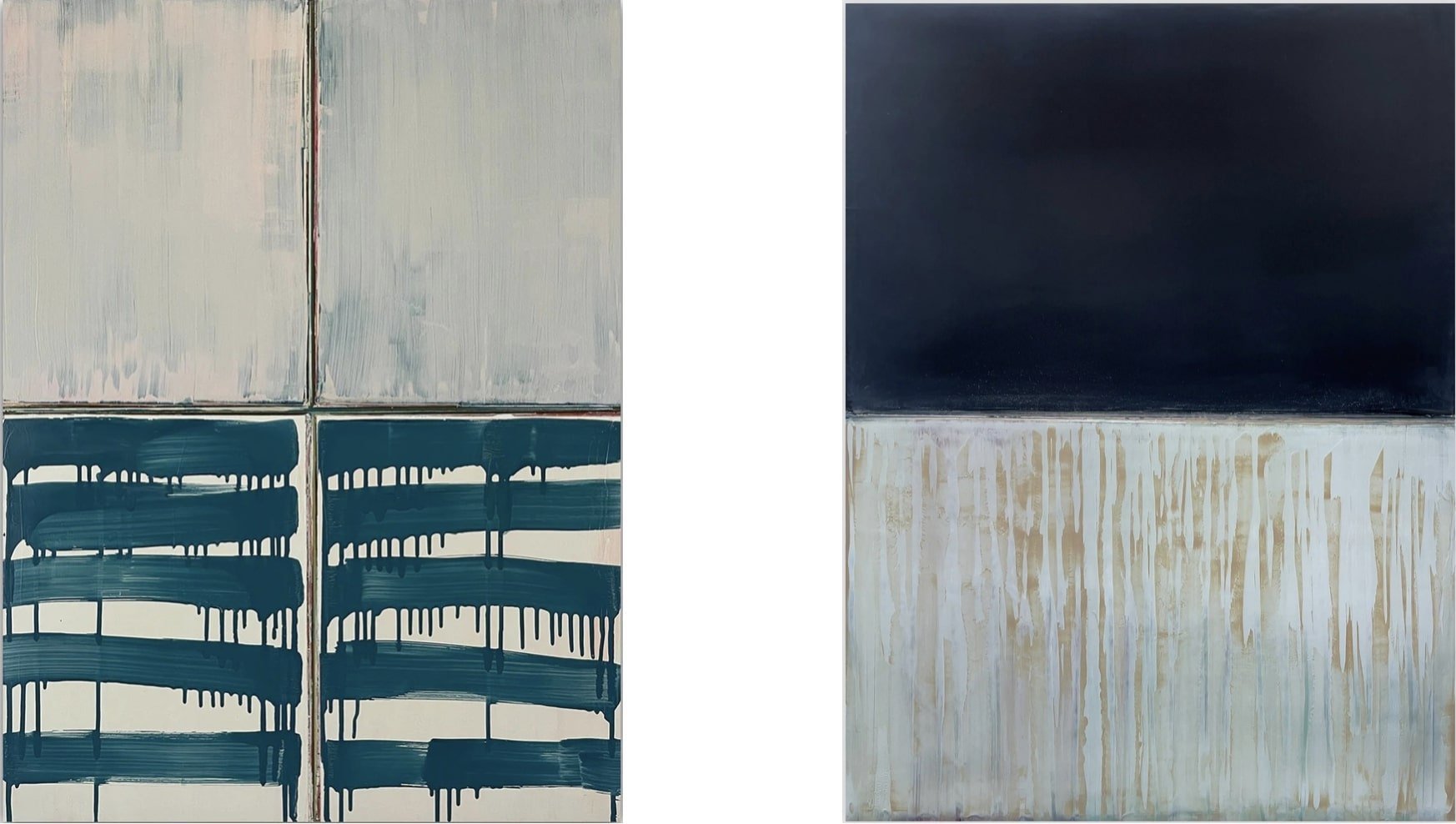
Erittäin maalailevat abstraktit taiteilijat: Uudet alkemistit
Heidelbergin studiossaan Arvid Boecker (kuvassa) raapii menetelmällisesti kangastaan silkkipainorullalla. Kerros kerrokselta hän rakentaa sitä, mitä hän kutsuu "värin arkeologiaksi." Kahdeksan tuhatta kilometriä kauempana amerikkalaisessa studiossaan Clay Johnson tekee saman asian kipsilevytyökaluilla, joskus tuhoten ja rakentaen saman osan uudelleen kolmekymmentä kertaa. Sillä välin Brysselissä Janise Yntema kuumentaa mehiläisvahaa juuri oikeaan lämpötilaan polttimellaan lisäten toisen läpikuultavan kerroksen kuukausien kertyneeseen työhön.
Nämä taiteilijat eivät ole koskaan tavanneet, mutta he jakavat pakkomielteen, joka on yhä harvinaisempi nykytaiteessa: uskon, että maali itse—sen paino, rakenne ja fyysinen läsnäolo—kantaa korvaamatonta voimaa.

Clay Johnson, After Midnight, 2020
Kärsivällisyyden katoava taide
Elämme taiteellisten oikoteiden aikakautta. Digitaaliset työkalut lupaavat välittömiä tuloksia. Uusia tekniikoita syntyy viikoittain, ja niitä juhlitaan yksinkertaisesti niiden uutuutensa vuoksi. Taidemaailma, kuten kaikki muukin, on lumoutunut nopeudesta ja mukavuudesta. Perinteiset maalaustekniikat—hitaita, työläitä, armottomia—tuntuvat lähes anachronistisilta.
Kuitenkin Saksasta Kaliforniaan, Belgiasta Alankomaihin levittäytyneissä studioissa jotkut taiteilijat jatkavat maalin levittämistä kankaalle keskiaikaisten käsityöläisten omistautumisella. He edustavat sitä, mitä voisimme kutsua Erittäin Maalailevaksi Abstraktiksi Taiteeksi, käytäntöä, jota ei määritä yhteinen estetiikka, vaan yhteinen vakaumus: että maalin fyysinen käsittely luo jotain, mitä mikään digitaalinen prosessi ei voi jäljitellä.
Tämä ei ole nostalgiaa. Se on vastarintaa.
Mikä tekee taiteesta "Erittäin Maalailevaa"?
Katso Clay Johnson työssään, ja ymmärrät heti. Hän ei käytä siveltimiä - liian hellävaraisia, liian ennustettavia. Sen sijaan hän hyökkää kankaansa kimppuun palettiveitsillä ja rakennustyökaluilla, raapien, rakentaen, tuhoten, rakentaen uudelleen. Hänen akryylimaalinsa kuivuu tarpeeksi nopeasti, jotta hän voi reagoida jokaiseen kerrokseen sitä mukaa kuin se ilmestyy, luoden pintoja, jotka ovat niin työstettyjä, että ne lähestyvät veistosta.
Tai tarkkaile Martina Nehrling menetelmällistä impasto-merkkien keräämistä, jokainen huolellisesti sijoitettu siveltimen veto tarttuu naapuriinsa kuin arkkitehtoniset elementit. Hänen puhtaat, läpinäkymättömät värinsä luovat hypnoottisia kuvioita, jotka tuntuvat värähtelevän fyysisellä energialla.
Mitä nämä taiteilijat jakavat, ei ole tyyli—heidän valmiit teoksensa näyttävät huomattavan erilaisilta. Mitä he jakavat, on prosessi: pakkomielteinen sitoutuminen maaliin materiaalina, pintaan aiheena, aikaan, joka tulee näkyväksi kerrostumien kautta.

Martina Nehrling, Apophis, 2024
Very Painterly Artin neljä pilaria
Tarkkailemalla heidän käytäntöjään nousee esiin neljä perustavaa periaatetta, jotka määrittelevät Very Painterly Abstract Artin. Nämä eivät ole sääntöjä vaan pakkomielteitä, voimia, jotka muovaavat jokaista päätöstä studiossa.
Materiaalin rehellisyys
Nämä taiteilijat eivät yritä saada maalia näyttämään joltakin muulta. Yari Ostovany juhlistaa tapaa, jolla pigmentti liukenee, peittää, raaputtaa pois ja liukenee uudelleen. Danny Giesbers rakentaa läpinäkyviä kerroksia, jotka luovat hohtavia kenttiä, jokainen siveltimen veto on ratkaisevassa roolissa kokonaisuudessa, jonka valmistuminen vei kuukausia. Maalin annetaan olla maalia—viskoosia, läpinäkymätöntä, itsepintaista, kaunista omassa oikeudessaan.
Ajallinen syvyys
Jokainen kerros edustaa päätöstä, hetkeä ajassa, vastausta aiempaan. Jeremy Annear reliefimäiset pinnat muuttuvat luovien päätösten arkeologisiksi kohteiksi. Voit lukea jokaisen maalauksen historian sen topografiasta—missä taiteilija rakensi, raaputti, muutti suuntaa, löysi ratkaisun.
Fyysinen sitoutuminen
Nämä teokset vaativat kehoja, eivät pelkästään mieltä. Robert Niesse rakentaa ja kuluttaa useita värialueita monimutkaisten fyysisten prosessien kautta. Emily Berger työskentelee eleellisten vaakasuorien alueiden kanssa, koko hänen kehonsa on mukana jokaisessa vedossa. Maalaukset kantavat ihmisen ponnistelun jälkiä, joita mikään assistentti ei voisi toistaa, eikä mikään digitaalinen prosessi simuloida.
Vastustus jäljentämiselle
Ehkä tärkeimpänä näitä teoksia ei voi täysin arvostaa ruudun kautta. Ne vaativat fyysistä läsnäoloa täydelliseen ymmärrykseen. Instagram-aikakaudellamme tämä on rohkea taiteellinen lausunto: jotkut kokemukset eivät ole digitoitavissa, jotkut nautinnnot eivät ole jaettavissa virtuaalisesti.

Jeremy Annear, Cascading Lines, 2013
Anarkronismin rohkeus
Vuonna 2025 tällainen työskentely vaatii rohkeutta. Sillä aikaa kun muut taiteilijat tutkivat tekoälyn yhteistyömahdollisuuksia, NFT-mahdollisuuksia ja näyttäviä installaatioita, nämä maalarit vetäytyvät studioihinsa kuukausiksi yksinäiseen työhön. He omaksuvat tekniikat, jotka eivät tarjoa oikoteitä, välitöntä tyydytystä tai viraalipotentiaalia.
Arvid Boeckern maalaukset syntyvät kärsivällisen rakentamisen kautta—ensiksi luonnostellen sommittelun, sitten kehittäen värejä ja kerroksia pitkien aikojen kuluessa. Jokaisesta teoksesta tulee topografinen kartta jatkuvasta tarkkaavaisuudesta. Kulttuurissa, joka palkitsee välittömyyden, hän vaatii lopullisuutta.
Janise Yntema työskentelee encaustic-vahalla, tekniikalla, joka on kirjaimellisesti muinainen—roomalaisten käyttämä, vuosituhansien aikana hiottu. Studiollaan hän levittää luonnollista mehiläisvahaa ja hartseja puupaneeleille käyttäen lämpöä aktiivisena liuottimena. Hitaiden puoliläpinäkyvien kerrosten kertymisen kautta hän luo kuvia, joissa valo itse tulee sommittelullisesti läsnäolevaksi. Hänen prosessinsa vaatii sitä, mitä hän kutsuu "alkeemilliseksi tanssiksi ohjatun ja hallitsemattoman välillä"—digitaalisen ennustettavuuden vastakohta.

Danny Giesbers, Neon 1 (vasen) ja Dan Flavin (oikea), 2020
Historialliset kaikuja, nykyaikainen kiireellisyys
Tämä lähestymistapa yhdistyy kuuluisien edeltäjien perintöön. Gerhard Richtern squeegee-maalaukset osoittavat täydellisen dialogin kontrollin ja sattuman välillä raskaasti käsiteltyjen pintojen kautta. Frank Auerbach ja Leon Kossoff muuttivat impaston veistokselliseksi relieviksi. Anselm Kiefer sisällytti hiekkaa, tuhkaa ja muistoja pintoihin, jotka kantavat historian painoa.
Mutta tämän päivän Erittäin Maalaukselliset Abstraktit taiteilijat kohtaavat erilaisen kulttuurisen kontekstin. Missä heidän edeltäjänsä työskentelivät valokuvauksen ja massamedian hallitsevuutta vastaan, nämä taiteilijat työskentelevät digitaalisen kulttuurin hallitsevuutta vastaan. He eivät vain tee maalauksia; he säilyttävät ajattelutavan, sitoutumisen muodon, kokemustyypin.

Emily Berger, Old Flame (vasen) ja Red Dream (oikea), 2022
Kansainvälinen sitkeys
Merkillepantavaa on, kuinka tämä sitoutuminen ilmenee eri kulttuureissa ja mantereilla. Danny Giesbers Alankomaissa kehittää algoritmisia lähestymistapoja yhdistettynä spontaaniin jäljen tekemiseen. Hänen "Shifts"-sarjassaan on fosforesoivia maaleja, jotka muuttuvat valaistusolosuhteiden mukaan—raskaan käsittelyn pinta osallistuu omaan jatkuvaan evoluutioonsa.
Emily Berger kerrostaa öljyvärejä puupaneeleille Kaliforniassa luoden työntö- ja vetovoimadynamiikkaa täydentävien värien kautta, jotka antavat hänen teoksilleen vivahteikasta valovoimaa. Raaputtamisen ja sivelyjen avulla hän yhdistää abstraktin ekspressionismin eleen nykyaikaiseen materiaalitietoisuuteen.
Robert Niesse rakentaa kiiltäviä kerroksia, jotka vuorottelevat voimakkaiden tunnusmerkkien kanssa, luoden sitä, mitä hän kuvaa "brutaaliksi kontekstiksi ja värikokoonpanojen päätökseksi." Hänen systemaattinen mutta intuitiivinen lähestymistapansa heijastaa suunnittelutaustaa samalla kun se omaksuu spontaanin abstraktin ilmaisun.
Jokainen taiteilija tuo kulttuurista erityispiirrettä jaettua materiaalista pakkomiellettä rikastuttaen sanastoa samalla kun säilyttää olennaisen sitoutumisen voimakkaasti työstettyihin pintoihin ja ajalliseen syvyyteen.

Yari Ostovany, Tässä tapaamme (For John Berger), 2015
Miksi tämä on tärkeää nyt
Puolustaessamme Very Painterly Abstract Art emme puolusta pelkästään esteettistä mieltymystä. Puolustamme pitkäaikaisen sitoutumisen arvoa, prosesseja, joita ei voi kiihdyttää, ja kokemuksia, joita ei voi digitoida.
Nämä taiteilijat muistuttavat meitä siitä, että teknologisista edistysaskeleista huolimatta suora, fyysinen materiaalien käsittely sisältää jotain korvaamatonta. Heidän voimakkaasti työstetyt pintansa ovat ihmisen luovuuden monumentteja – tallenteita pitkäaikaisesta vuorovaikutuksesta taiteilijan ja materiaalin välillä, jota mikään digitaalinen prosessi ei voi jäljitellä.
Markkinat tunnistavat tämän korvaamattomuuden. Jotkut keräilijät etsivät teoksia, jotka vaativat fyysistä läsnäoloa täydelliseen ymmärrykseen, maalauksia, jotka paljastavat uusia yksityiskohtia jokaisella katselukerralla, pintoja, jotka muuttuvat valon ja perspektiivin mukaan. Very Painterly Abstract artists tarjoavat juuri tämän kokemuksen.

Robert Niesse, 2121-6, 2024
Vastustuksen tulevaisuus
Kun digitaalinen kulttuuri yleistyy, Very Painterly Abstract Art muuttuu arvokkaammaksi – ei historiallisena kuriositeettina, vaan nykyajan välttämättömyytenä. Nämä taiteilijat eivät säilytä menneisyyttä; he varmistavat, että tietyt ihmiskokemuksen muodot pysyvät mahdollisina.
He edustavat viimeisiä alkemisteja välittömän kaiken aikakaudella, muuttaen raaka-aineet korvaamattomiksi kokemuksiksi ajan, kärsivällisyyden ja fyysisen sitoutumisen kautta. Heidän studionsa muuttuvat pyhättöiksi, joissa erilaiset suhteet aikaan ja tekemiseen pysyvät mahdollisina.
Juhlistaessamme näitä taiteilijoita juhlistamme paitsi yksilöllistä saavutusta myös käytäntöjen jatkuvaa elinvoimaisuutta, jotka kieltäytyvät tekemästä kompromisseja nopeuden kanssa. He varmistavat, että maalaus pysyy paitsi merkityksellisenä myös välttämättömänä, tarjoten jotain yhä harvinaisempaa: mahdollisuuden kohdata fyysisiä jälkiä pitkäaikaisesta ihmisen ajattelusta ja tunteesta.
Heidän paksut maalipintansa kantavat enemmän kuin pigmenttiä: ne kantavat vakaumusta siitä, että jotkin asiat eivät voi olla kiireisiä, digitoituja tai yksinkertaistettuja. Kiihdytetyssä ajassamme he vaativat hidastamista. Virtuaalisessa maailmassamme he vaativat fyysistä läsnäoloa. Loputtoman jäljentämisen aikakaudellamme he luovat korvaamattoman.
Tämä on heidän rohkeutensa, lahjansa ja perintönsä.
